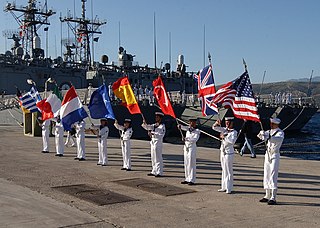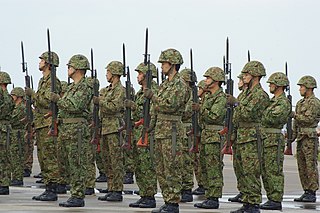 W
WA police band is a military-style band operated or sponsored by a police force. Police bands provide ceremonial support for civic events, and perform at police observances such as funerals and police academy graduations. Most police bands consists exclusively of professional police officers, while others consist of personnel of law enforcement and other special agencies. Like military bands, their repertoire is mostly composed of ceremonial marching music and honors music.
 W
WBlack and white is an American slang term for a police car that is painted in large panels of black and white, or generally any "marked" police car. Historically, this scheme is much favored by North American police forces because it allows the unambiguous recognition of patrol units from a significant distance. However, as the color scheme is not standardized, each police agency in Canada, Mexico, and the U.S. can choose their own color scheme. The most common variant of the black and white color scheme is white roof and four white doors, the second most common is white roof and only the two front doors. In Finland and Sweden, the black and white police cars had black roofs to make them visible in high snow. In european police forces, the colour scheme with blue and white and green and white in Spain are very common, and in Germany was standard, mainly in the past.
 W
WIn military organizations, a colour guard is a detachment of soldiers assigned to the protection of regimental colours and the national flag. This duty is so prestigious that the colour is generally carried by a young officer (Ensign), while experienced non-commissioned officers are assigned to the protection of the flag. These NCOs, accompanied sometimes by warrant officers, can be ceremonially armed with either sabres or rifles to protect the colour. Colour guards are generally dismounted, but there are also mounted colour guard formations as well.
 W
WDrill commands, commonly referred to by the United States Armed Forces as Drill and ceremony are generally used with a group that is marching, most often in military foot drill or marching band. Drill commands are usually heard in major events involving service personnel, reservists and veterans of a country's armed forces, and by extension, public security services and youth uniformed organizations.
 W
WFoot drill is a part of the training regimen of organized military and paramilitary elements worldwide. "Foot drill" or "Drill" stems from time since antiquity when soldiers would march into battle, be expected to gather in a formation, and react to words of command from their commanders once the battle commenced. Much of the drill done today is either ceremonial, or implemented as a core part of training in the Armed Forces. Military discipline is enhanced by drill, as it requires instant obedience to commands and synchronized completion of said commands with the others in the unit.
 W
WMarching refers to the organized, uniformed, steady walking forward in either rhythmic or route-step time; and, typically, it refers to overland movements on foot of military troops and units under field orders. It is a major part of military basic training in most countries and usually involves a system of drill commands. A soldier learning to march to drum cadences, martial music and shouted commands is considered an essential element of teaching military discipline.
 W
WA police box is a public telephone kiosk or callbox for the use of members of the police, or for members of the public to contact the police. It was used in the United Kingdom throughout the 20th century from the early 1920s. Unlike an ordinary callbox, its telephone was located behind a hinged door so it could be used from the outside, and the interior of the box was, in effect, a miniature police station for use by police officers to read and fill in reports, take meal breaks and even temporarily hold detainees until the arrival of transport.
 W
WThe Posting of the Colors is a practice conducted by color guards of the United States Armed Forces at the beginning of a particular ceremony. The practice is also done by the Boy Scouts of America. Posting the colours requires that a color guard team lower the colors into a stand. This formality is normally done at events such as graduation ceremonies and public events. Specifically, it is done prior to the playing of the Star Spangled Banner or the reading of the pledge of allegiance. In that case, the color guard will present arms once the colors have been posted.
 W
WPresent arms is a two-part drill command used by many militaries and public safety professionals in the world as a sign of respect. It comes from the old British command "Arms to the present!"
 W
WReverse arms and the related rest on arms reversed are military drill commands used as a mark of respect at funerals and on occasions of mourning, especially in the armed forces of Commonwealth nations. When marching in reverse arms the soldier's weapon is held pointing behind them and grasped behind their back. When resting on reversed arms the weapon points towards the ground and the eyes are lowered.